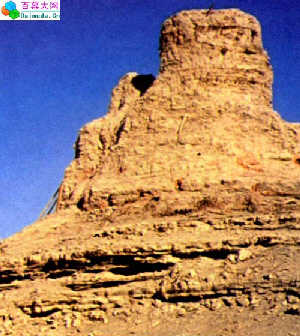| |
Ancient State of Loulan
( 2005-09-13 )
 Site of Loulan State Site of Loulan State
 The site is located on the west bank of Lop Nur Lake, which was once a rich water network, but has now completely dried up. The expanses of vast sand dunes are dubbed the "forbidden zone to life" to the northeast of Ruoqiang County in Xinjiang. The weather there is very extreme: During the summer, the maximum temperature tops 50 degrees Celsius, and in the winter it can fall to as low as 30 degrees below zero. The site is located on the west bank of Lop Nur Lake, which was once a rich water network, but has now completely dried up. The expanses of vast sand dunes are dubbed the "forbidden zone to life" to the northeast of Ruoqiang County in Xinjiang. The weather there is very extreme: During the summer, the maximum temperature tops 50 degrees Celsius, and in the winter it can fall to as low as 30 degrees below zero.
Records from the Loulan kingdom abound in major historical works in both China and the West of over 1,600 years ago. Loulan was a sprawling kingdom of 360,000 square kilometers, whose domain borderedDunhuangin the East andNiyaCity in the West. It had a population of over 14,000, and, as a key traffic hub on the ancient Silk Road, it served as an important trading center between China and the West, welcoming streams of camels loaded with exotic goods from many parts of the world. Many of the visitors and caravans were from the Mediterranean region.
The ruins unearthed so far cover an area of over 100,000 square meters, filled with the ruins of city walls, residential buildings, palaces,temples, workshops, and towers, as well as broken beams and pillars.
The city has an irregular square shape, with the east city wall measuring 333 meters, the south wall, 329 meters, and the west and north walls 327 meters each. Archeologists believe there was once a water tunnel running through the city that divided it into two functional parts. The most eye-catching architecture is a woodenBuddhist pagodalocated in the eastern city ruins. This octagonal-shaped pagoda is 10 meters high with a square base and a round top.
In the city center are rows of adobe houses surrounded by piles of wood, with some pieces of timber up to five or six meters in length. On the foundations of some of the houses, traces of red paint can still be seen. A large amount of historical documents have been discovered among these houses.
|
|

